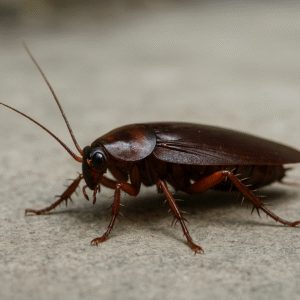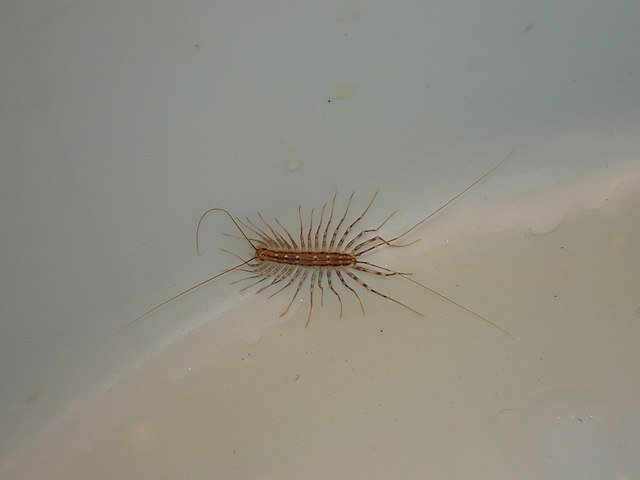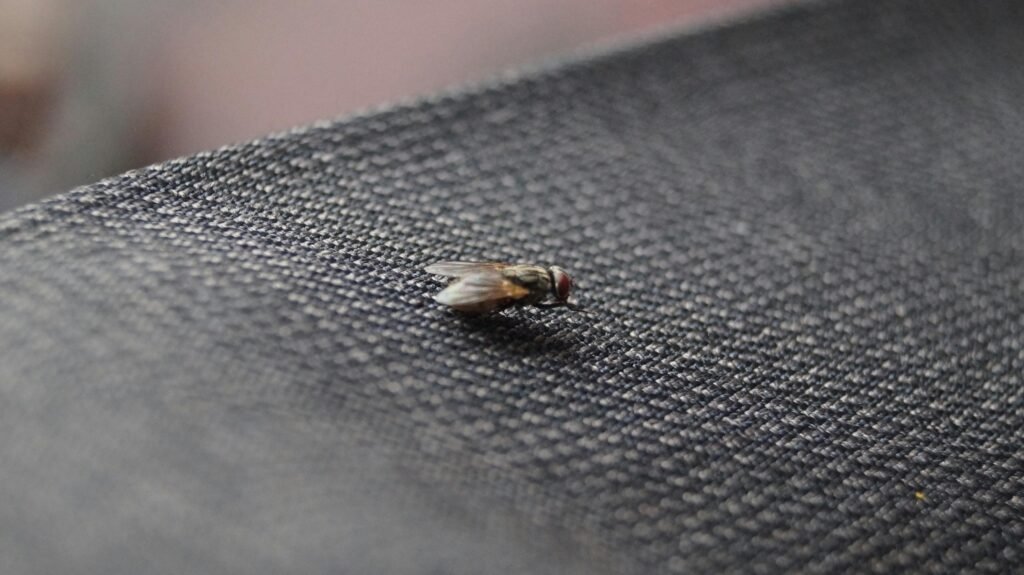Smokybrown Cockroach: Identification, Risks, and Control Guide
The smokybrown cockroach (Periplaneta fuliginosa) is a large and glossy cockroach species that often surprises homeowners with its striking dark-brown appearance. Closely related to the American cockroach (Periplaneta americana), this insect is particularly adapted to warm, humid environments, making it a frequent invader in the southern United States, Asia, and other subtropical regions.
is a large and glossy cockroach species that often surprises homeowners with its striking dark-brown appearance. Closely related to the American cockroach (Periplaneta americana), this insect is particularly adapted to warm, humid environments, making it a frequent invader in the southern United States, Asia, and other subtropical regions.
Unlike the smaller German cockroach (Blattella germanica), which thrives indoors, the smokybrown cockroach usually nests outdoors but ventures inside homes in search of food and water. Their strong flying ability, rapid reproduction, and tendency to contaminate living spaces make them both a nuisance and a public health concern.
This guide explores the biology, risks, and best strategies for controlling P. fuliginosa, while also providing historical and cultural context that shows how deeply cockroaches are tied to human settlements.
Identification
Recognizing the smokybrown cockroach is the first step to effective control.
Size: Adults measure 1.25 to 1.5 inches (32–38 mm) in length.
Color: Uniform dark brown to almost black, with a shiny, polished appearance. Unlike the reddish American cockroach, they lack lighter markings on the thorax.
Wings: Both males and females have long wings that extend beyond the body. They are strong fliers, which differentiates them from many other household cockroaches.
Nymphs: Young stages are black with white bands on their antennae, making them easier to spot in early infestations.
When compared to oriental cockroaches (Blatta orientalis), the smokybrown is slimmer and more agile, with far superior flight capabilities.
Biology and Ecology
The smokybrown cockroach’s survival depends on its strong adaptation to moist environments.
Diet: They are omnivorous scavengers, feeding on decaying organic matter, plant debris, garbage, and even pet food. Indoors, they will attack pantry items, grease, and crumbs.
Moisture dependence: P. fuliginosa dehydrates quickly and requires constant water sources. This is why infestations are common in bathrooms, kitchens, crawl spaces, and basements.
Reproduction: Females produce oothecae (egg cases) containing about 24 eggs. These are glued to surfaces or hidden in sheltered areas. Development from egg to adult takes 9–10 months, depending on climate.
Behavior: Primarily nocturnal, they hide in dark crevices during the day and emerge at night. Their strong flying ability allows them to spread between outdoor breeding sites and indoor living spaces.
In ecosystems, smokybrown cockroaches recycle decaying matter, but inside human environments, their presence is largely harmful.
Global Distribution
The smokybrown cockroach is believed to have originated in Asia but has spread globally through trade and travel.
United States: Most common in the Southeast, including Texas, Florida, Georgia, Louisiana, and the Carolinas.
Asia: Found in Japan, China, and Southeast Asian countries where humidity levels support their survival.
Other regions: Established populations exist in Australia, Central America, and parts of Africa.
Unlike the brown-banded cockroach (Supella longipalpa), which thrives in drier environments, smokybrowns are limited to warm and moist regions.
Risks and Damage
Smokybrown cockroaches are more than just unpleasant; they present tangible risks:
Health risks:
Mechanical vectors of bacteria, including Salmonella and E. coli.
Their saliva, feces, and shed skins contribute to allergens that may trigger asthma.
Food contamination: They crawl through sewers, drains, and garbage before entering kitchens, contaminating surfaces and food items.
Structural impact: Chewing behavior can damage books, cardboard, and fabrics.
Psychological stress: Their large size and flying ability make them particularly intimidating to people, increasing anxiety in infested households.
Compared with bed bugs (Cimex lectularius), which feed directly on blood, cockroaches do not bite often, but their indirect disease-spreading potential is equally concerning.
Signs of Infestation
Detecting smokybrown cockroaches early prevents a minor issue from becoming a major infestation.
Sightings: Large, fast-moving cockroaches spotted at night, often near drains or outside lights.
Droppings: Resemble coffee grounds or pepper, often left near baseboards or under sinks.
Egg cases: Dark brown, cylindrical oothecae attached to walls, ceilings, or storage boxes.
Odor: Heavy infestations produce a strong, musty smell caused by pheromones.
Flight behavior: Flying cockroaches around porch lights or entering through open doors.
These clues are similar to infestations of the American cockroach, but the smokybrown is more moisture-dependent and often found in higher numbers outdoors.
Control Methods
Effective control combines sanitation, exclusion, and targeted treatments.
Sanitation:
Eliminate food crumbs, grease, and open garbage.
Store pet food in sealed containers.
Fix leaky pipes and remove standing water.
Exclusion:
Seal cracks in foundations, gaps around windows, and spaces under doors.
Use mesh screens for vents and drains.
Chemical treatments:
Baits with active ingredients such as hydramethylnon, fipronil, or indoxacarb.
Insect growth regulators (IGRs) to disrupt reproduction.
Residual sprays applied to entry points and nesting areas.
Non-chemical methods:
Sticky traps for monitoring.
Vacuuming live insects and egg cases.
Compared with controlling German cockroaches, which often requires intense indoor treatments, smokybrown infestations demand outdoor perimeter management as well.
Advanced Approaches
For persistent infestations, integrated pest management (IPM) is the most reliable strategy.
Moisture management: Install dehumidifiers in basements and crawl spaces.
Landscape control: Trim vegetation, clear leaf litter, and keep firewood stored away from the house.
Professional intervention: Licensed pest control operators can apply advanced formulations and track infestation sources.
Biological research: Studies are exploring the use of natural predators such as parasitic wasps that attack cockroach egg cases.
Advances in genetic and microbial control methods may one day provide eco-friendly solutions against P. fuliginosa.
Cultural and Historical Context
Cockroaches have a long association with human history. The smokybrown cockroach itself does not feature heavily in folklore, but cockroaches as a group symbolize resilience and survival.
Folklore: In some Asian traditions, cockroaches represent persistence due to their ability to thrive under adverse conditions.
Urban legends: Myths claim cockroaches can survive nuclear fallout, a belief fueled by their resilience and adaptability.
Modern symbolism: In literature and film, cockroaches are often used as metaphors for dirtiness, corruption, or survival in harsh environments.
This context highlights how P. fuliginosa fits into a broader narrative of human coexistence with cockroaches across centuries.
FAQ
Q1: Do smokybrown cockroaches bite humans?
Bites are extremely rare. They may nibble on food residues on skin, but they are not blood-feeding insects like mosquitoes (Culex spp.) or bed bugs (Cimex lectularius).
Q2: Why are smokybrown cockroaches attracted to my house?
They are drawn to moisture, food residues, and bright lights at night. Outdoor lighting near doors and windows often attracts them indoors.
Q3: Can smokybrown cockroaches fly long distances?
Yes. Unlike many other cockroaches, P. fuliginosa are capable fliers, which makes them harder to control.
Q4: Are smokybrown cockroaches more dangerous than American cockroaches?
Both species carry similar risks. However, smokybrowns are more dependent on moisture, which may make them easier to manage if water sources are eliminated.
Q5: How long do smokybrown cockroaches live?
Their lifespan is about 200–300 days, depending on climate and food availability.
Q6: What’s the best long-term strategy for control?
Integrated pest management: sanitation, moisture reduction, exclusion, and professional monitoring combined.
Final Thoughts
The smokybrown cockroach (Periplaneta fuliginosa) is a resilient pest that thrives in warm, humid environments and often invades homes in search of food and water. Its strong flying ability, rapid reproduction, and role as a disease vector make it a serious concern for both homeowners and businesses.
Prevention is always more effective than reaction. By focusing on sanitation, moisture control, and structural exclusion, property owners can reduce the chances of infestation. For established problems, professional pest management offers targeted solutions that combine modern insecticides, growth regulators, and integrated pest management (IPM) principles.
Understanding the biology and behavior of smokybrown cockroaches helps in designing long-term strategies that go beyond temporary fixes. With consistent effort, infestations can be controlled, and the risks to health and hygiene significantly reduced.
Learn more about other Urban & Indoor Pests that affect our houses and buidings.
Disclaimer
This article is for informational purposes only. Pest control laws and approved chemicals vary by country. For best results and legal safety, we strongly recommend contacting a licensed pest control professional in your local area. Always make sure that the pest control technician is properly certified or licensed, depending on your country’s regulations. It’s important to confirm that they only use approved products and apply them exactly as instructed on the product label. In most places in Europe, UK, or USA, following label directions is not just best practice—it’s the law.
Author Bio
Nasos Iliopoulos
BSc Agronomist & Certified Pest Control Expert
Scientific Director – Advance Services (Athens, Greece)
Licensed Pest Control Business – Ministry of Rural Development & Food (GR)
References
National institutes of Health - Biology and management of the smokybrown cockroach
Wikipedia - Smokybrown cockroach


